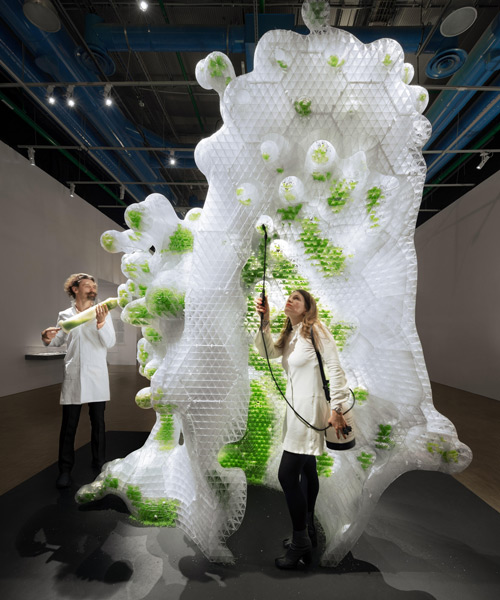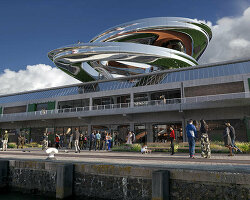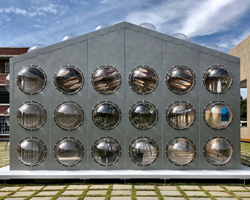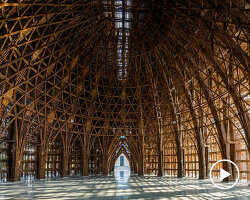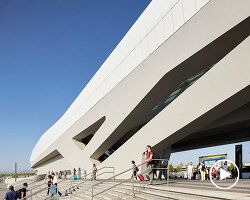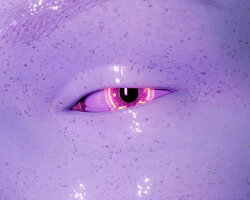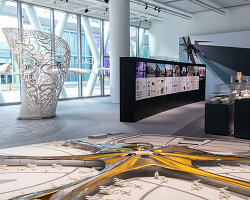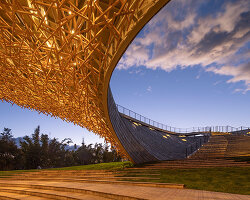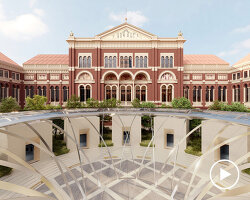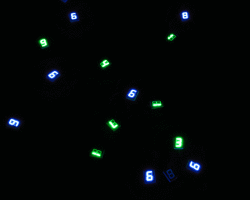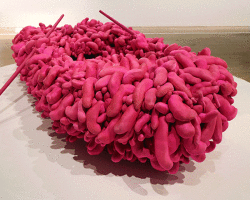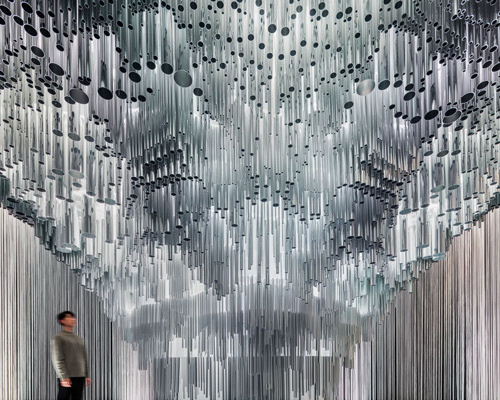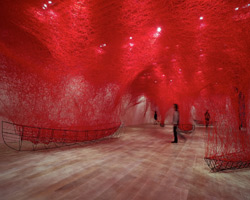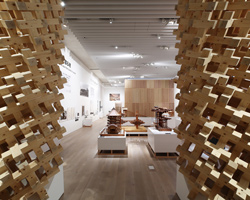digital exhibition tour: tokyo’s MORI ART MUSEUM presents ‘future and the arts: AI, robotics, cities, life – how humanity will live tomorrow’ from now through march 29, 2020. advances in technology over the past few years are now starting to have a significant impact on various aspects of our lives.
it is said that not too far in the future, human beings will be entrusting many of their decisions to AI, which will then supersede human intelligence. the advent of ‘singularity’ will potentially usher in enormous changes to our society and lifestyles. the development of blockchain technology looks set to build new levels of trust and value into our social systems, while advances in biotechnology will have a major impact on food, medicine, and the environment. it is also possible that one day, we humans will be able to extend our physical functions, and enjoy longer life spans.
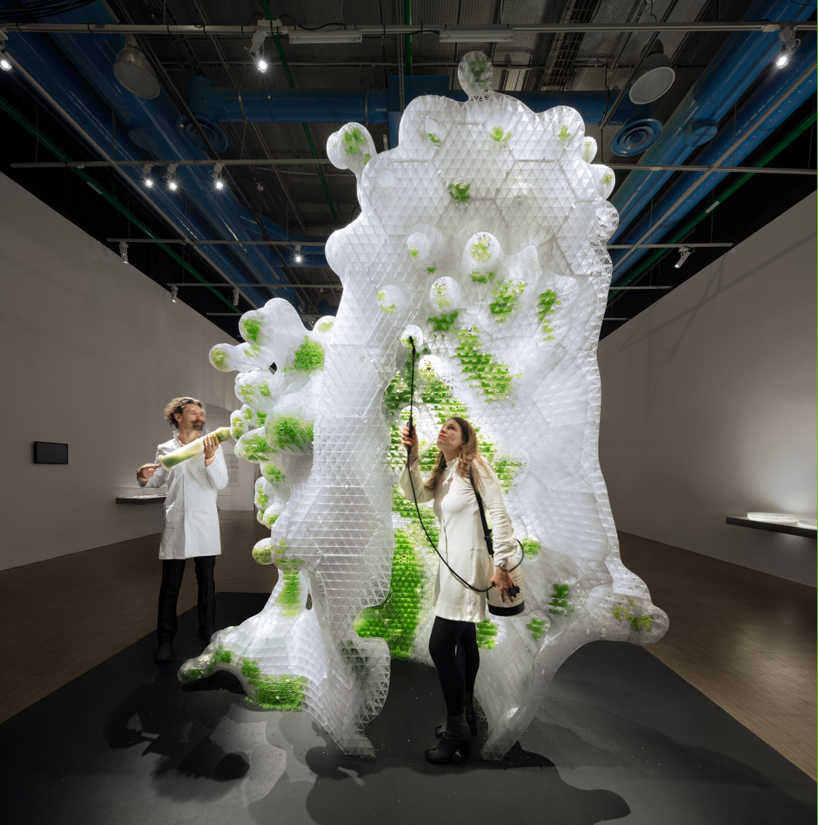
ecologicstudio | h.o.r.t.u.s. xl astaxanthin.g, 2019
image © naaro
showcasing over 100 projects, the exhibition at the MORI ART MUSEUM comprises five sections: new possibilities of cities; toward neo-metabolism architecture; lifestyle and design innovations; human augmentation and its ethical issues; society and humans in transformation. the demonstration aims to encourage us to contemplate cities, environmental issues, lifestyles and the likely state of humanity in the imminent future — via cutting-edge developments in AI, biotechnology, robotics, and augmented reality, and how art, design, and architecture will be influenced by all these.
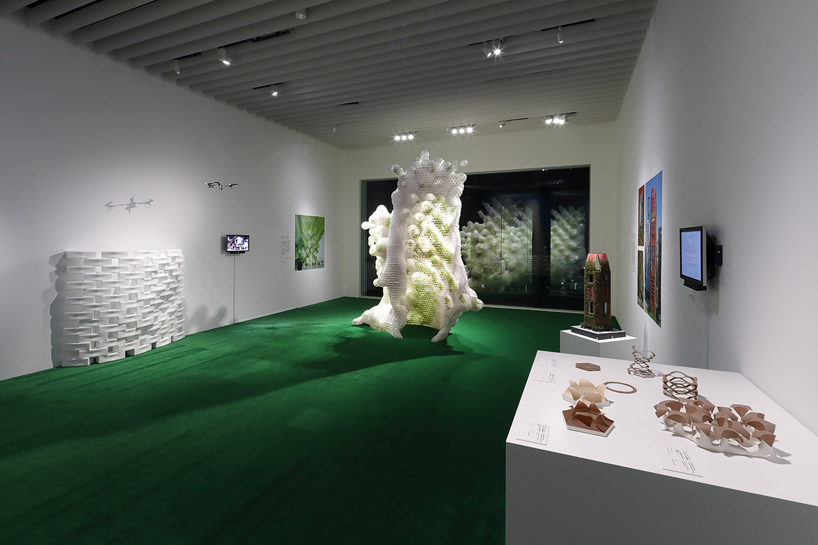
installation view of future and the arts: AI, robotic, cities, life – how humanity will live tomorrow
photo by kioku keizo
section 1 of the exhibition explores the ‘new possibilities of cities’. new cities being constructed are starting to make the leap beyond conventional urban parameters to desert, sea and air. they are reminiscent of, almost a revival of metabolism envisaged and conceptualized by young japanese architects during the 1960s. most of them did not come to fruition with the existing technologies. however, with the advances of information technology and biotechnology, the real metabolism cities that are sustainable, and environmentally-sound are becoming possible. in this section, the museum looks at the leading examples of urban planning, and the truly unique visions of artists and architects, via photographs, video and models and more.
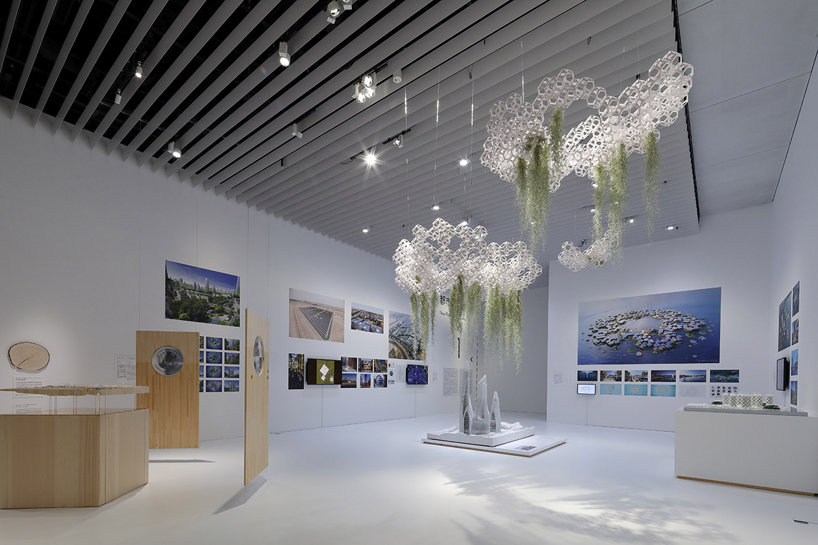
installation view of future and the arts: AI, robotic, cities, life – how humanity will live tomorrow
photo by kioku keizo
section 2 introduces the topic, ‘toward neo-metabolism architecture’. this feature explores the possibilities of today’s architecture as exemplified by the development of environmentally-friendly organic building materials and some new construction methods that fully utilize advanced technologies represented by 3D printers, drones, and robotics. coexisting with nature, sustainable and dynamic, they flexibly metabolize — suggesting the possibilities of ‘neo-metabolism’ architecture.
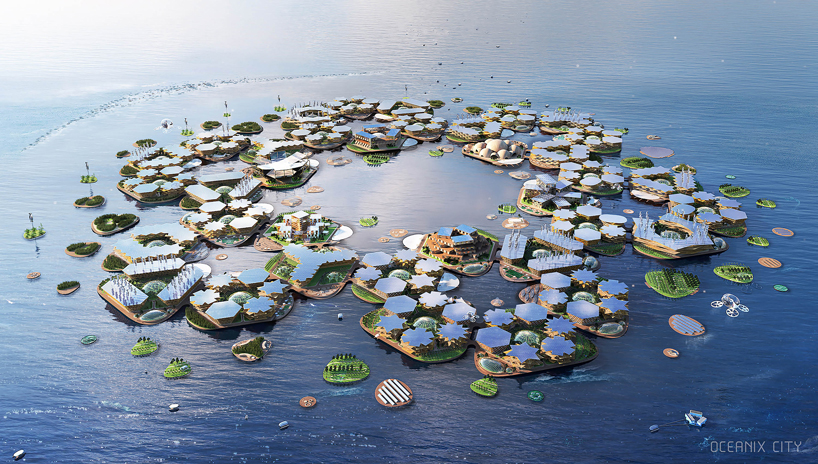
bjarke ingels group | oceanix city, 2019
‘lifestyle and design innovations’ is explored in section 3. technical innovations are steadily altering the way we eat, dress and live. the appearance of computer modeling and 3D printing has changed the course of design history, while the development of artificial food, for example, has emerged as one solution to global challenges such as population growth and food shortages. this section looks at the kinds of design and products emerging from the latest technologies and radical new concepts, and explores their potential to generate new lifestyles.
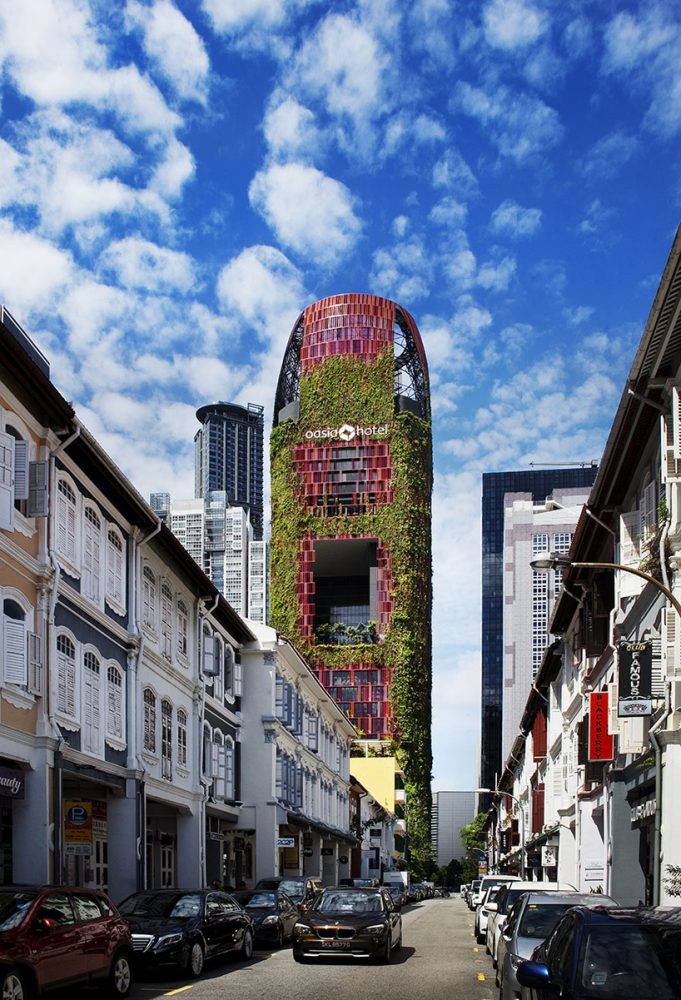
woha | the oasia hotel downtown, 2016
photo by patrick bingham-hall
section 4 features a selection of projects around ‘human augmentation and its ethical issues’. advances in robotics and biotechnology help expand human capacity while making it possible to overcome incurable diseases. as wonderful as it all sounds, this also raises ethical questions about the extent to which we as humans should be altering our bodies. this section focuses on the body, that greatest of all human concerns.
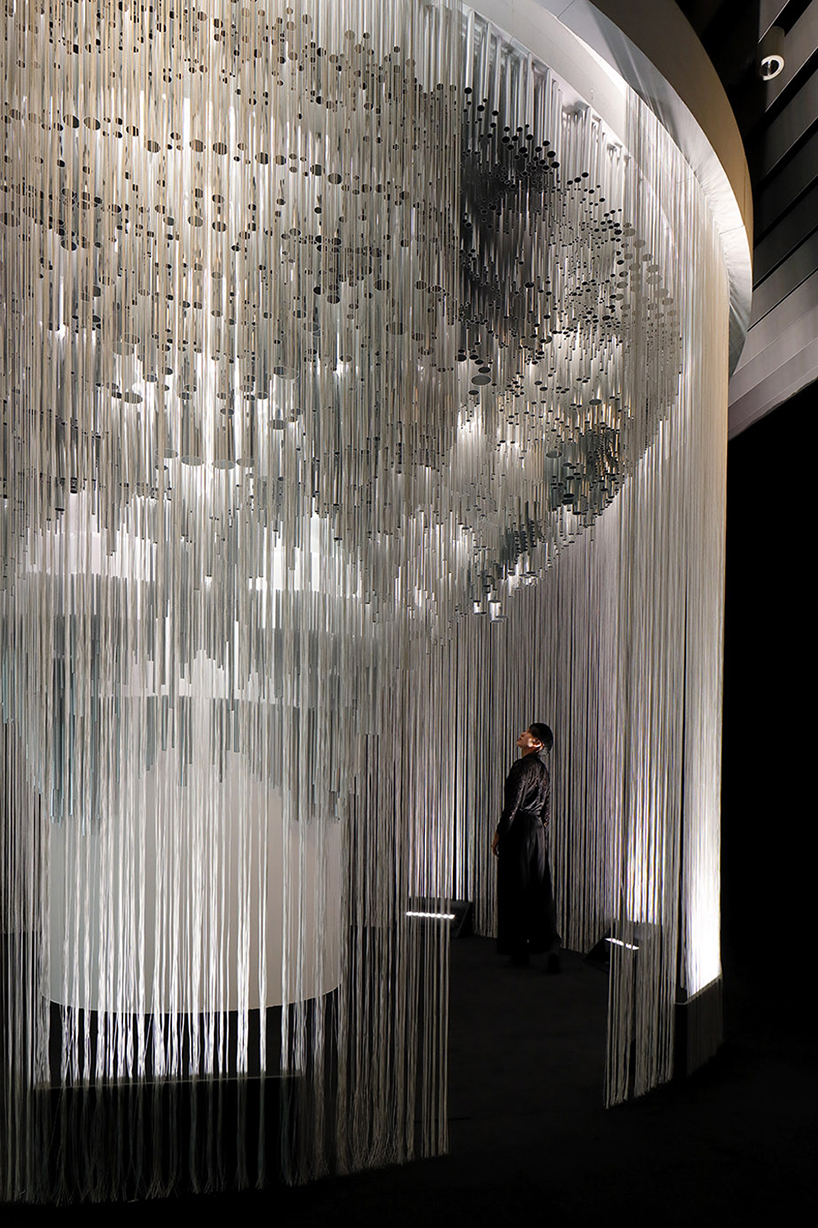
michael hansmeyer | muqarna mutation, 2019
aluminum, eps, steel and plywood | 400 x φ600 cm
installation view of future and the arts: AI, robotic, cities, life – how humanity will live tomorrow
photo by kioku keizo
in the final section, the theme of ‘society and humans in transformation’ is explored. technological developments and the concomitant changes in outlook overturn previously-accepted notions of society and what it is to be human. in future we may see humans being nursed by robots, for instance, or ‘sharing’ of children with the DNA of three or more parents. this last section in the exhibition urges visitors to rethink the definition of ‘human’, ‘life’ and ‘happiness’, and questions what we should do to move to a better future.
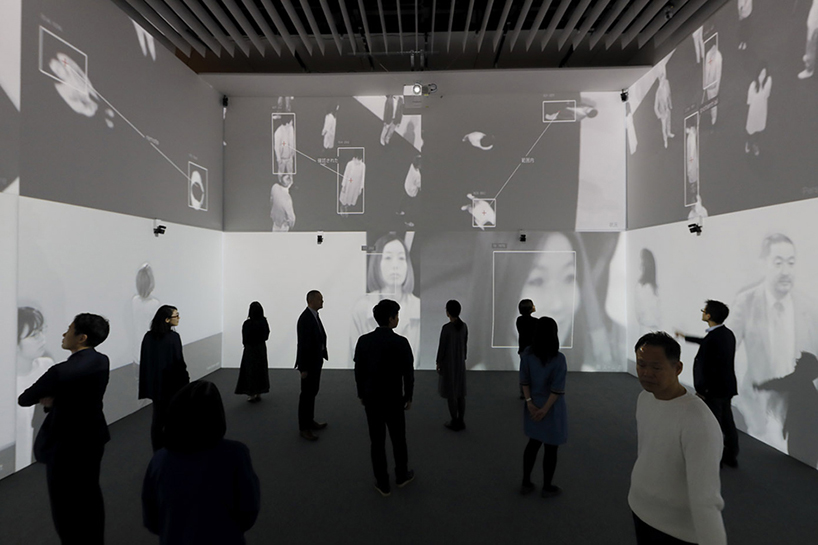
rafael lozano-hemmer in collaboration with krzysztof wodiczko | zoom pavilion, 2015
interactive video installation | dimensions variable | courtesy of bitforms gallery, new york
installation view of future and the arts: AI, robotic, cities, life – how humanity will live tomorrow
photo by kioku keizo
the effect of technological changes may not be necessarily and universally positive, yet surely we need to at least acquire a vision of what life may look like in the next 20 – 30 years. doing so in the exhibition seeks to spark fundamental questions about the nature of affluence and of being human, and what constitutes life.
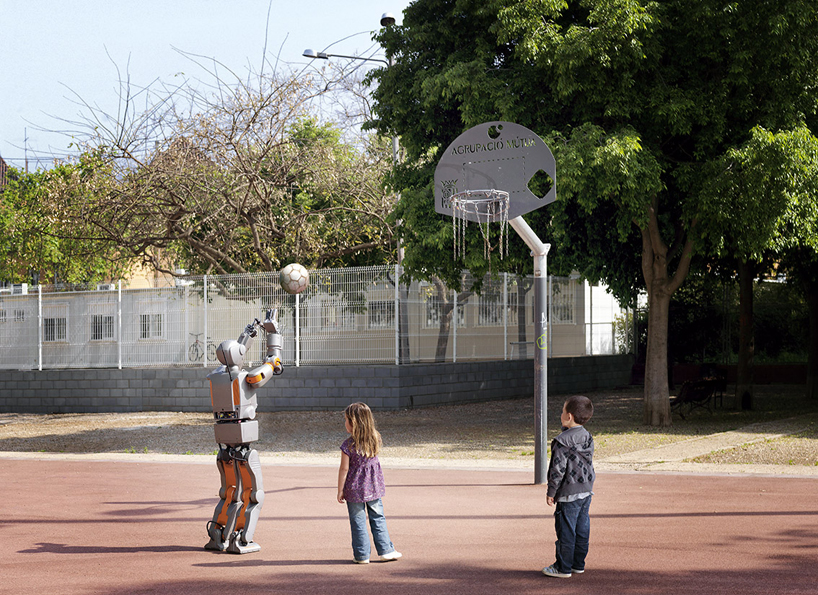
vincent fournier | reem b #6 [pal], barcelona, spain, 2010
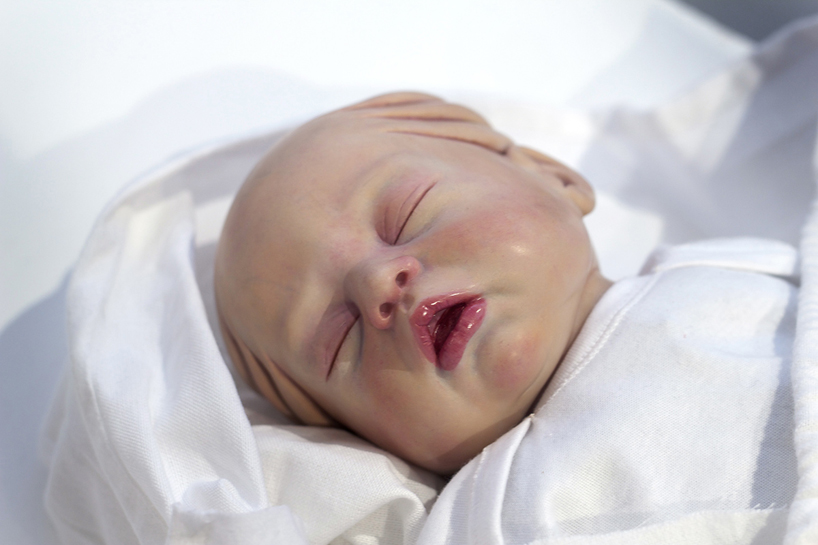
agi haines | thermal epidermalplasty (from the series ‘transfigurations’), 2013
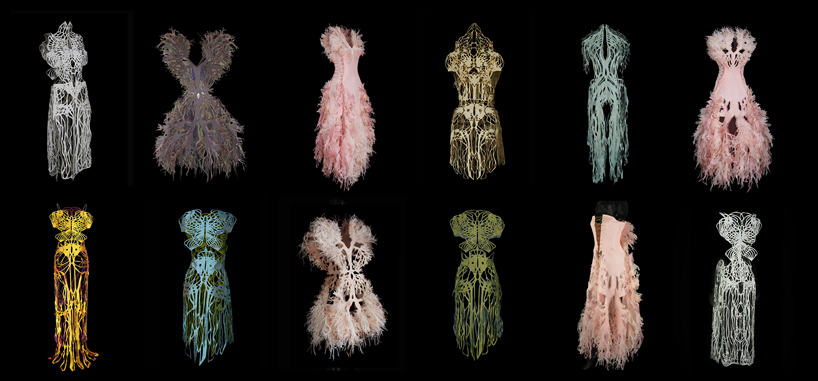
amy karle | internal collection, 2016-2017
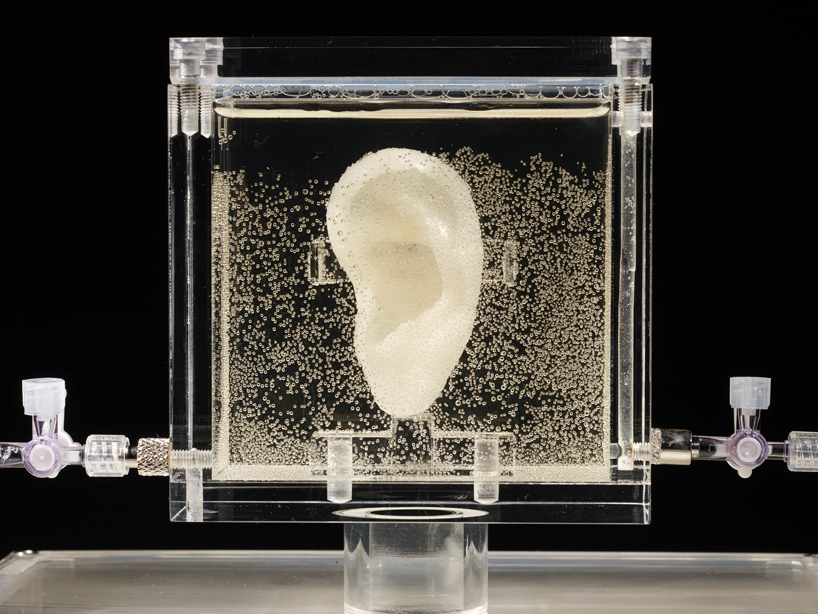
diemut strebe | sugababe, 2014-
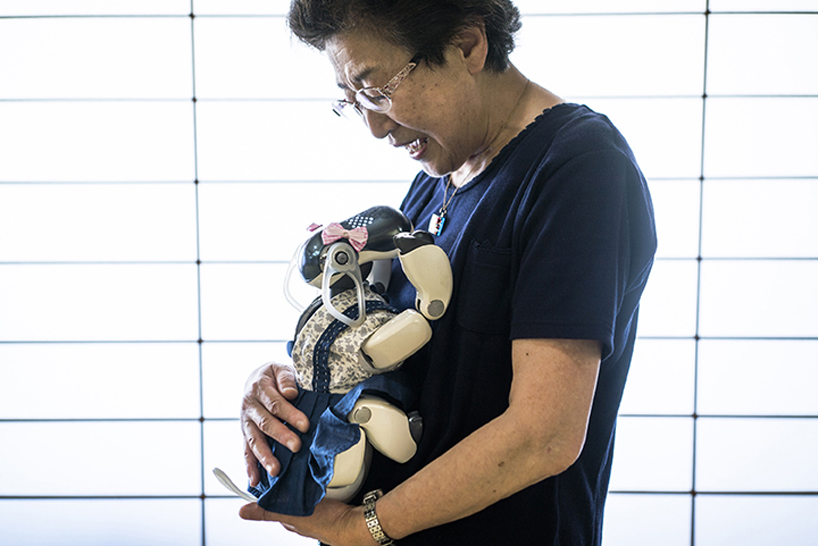
zackary canepari and drea cooper | the dog, 2015
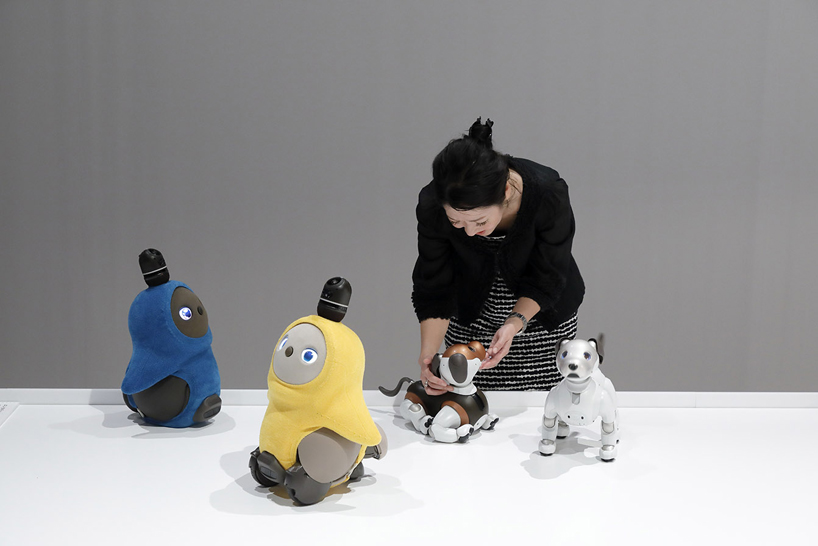
installation view of future and the arts: AI, robotic, cities, life – how humanity will live tomorrow
photo by kioku keizo
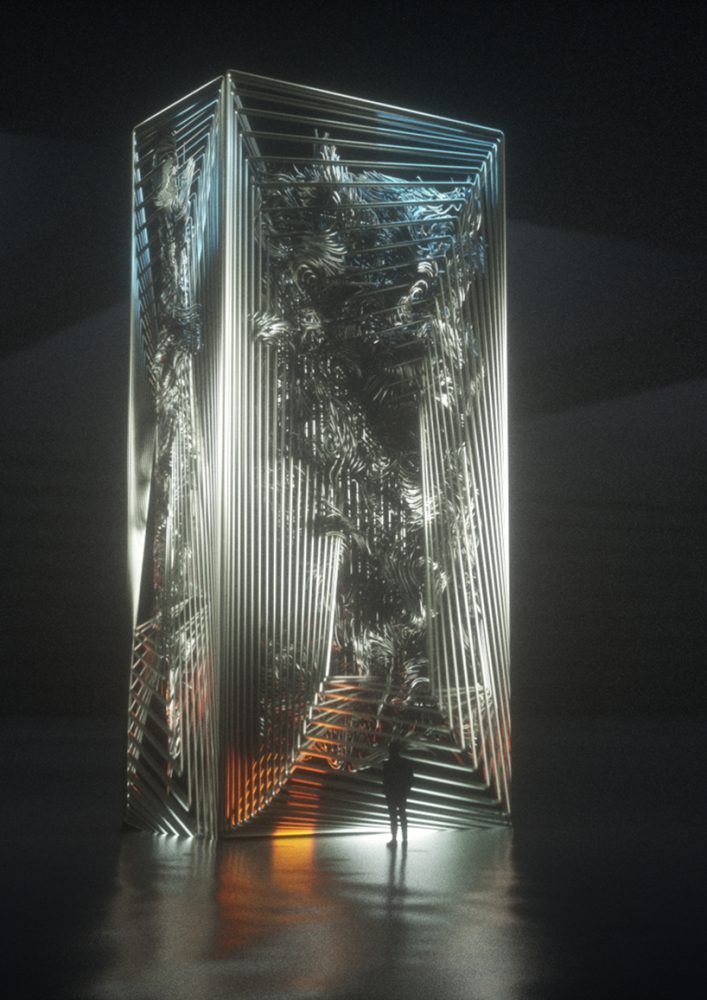
ouchhh | datamonolith, 2018

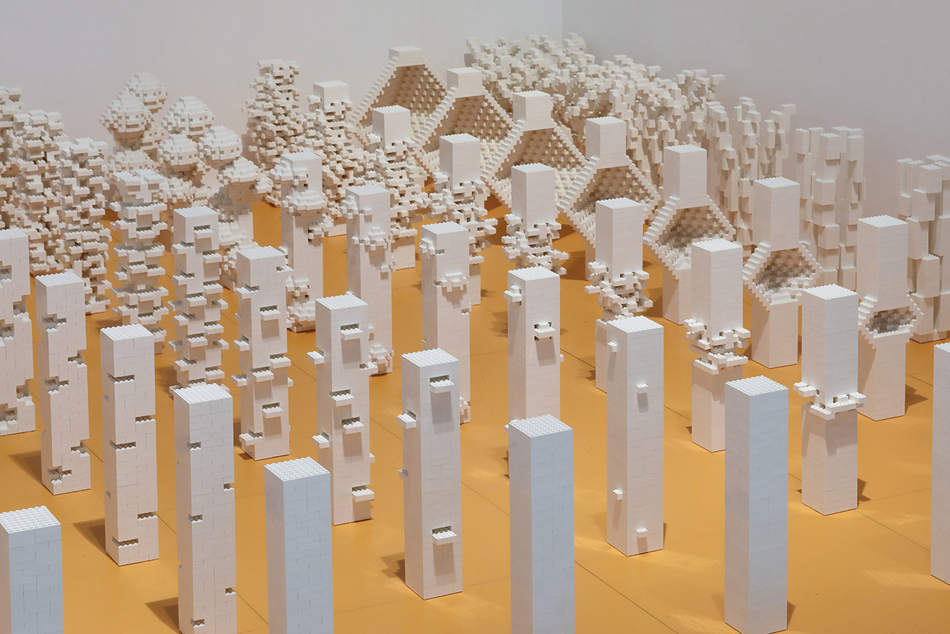




project info:
exhibition title: future and the arts: AI, robotics, cities, life – how humanity will live tomorrow
organizers: MORI ART MUSEUM, NHK
in association with: embassy of switzerland in japan
grants from: adam mickiewicz institute / culture.pl; australian embassy tokyo; the swiss arts council pro helvetia; the great britain sasakawa foundation
corporate sponsors: OBAYASHI CORPORATION; delta electronics (japan) inc.; JUT group (taiwan); MAIN; MGM resorts japan; thai beverage public company limited; SANKEN SETSUBI KOGYO CO., LTD.; mixi, inc.; IHI transport machinery co., ltd.,; KUME SEKKEI co., ltd.; NIPPON PMAC co., ltd.; NIPPON TELEGRAPH AND TELEPHONE CORPORATION; AMANO corporatio; SHINRYO CORPORATION
support: ALL NIPPON AIRWAYS CO., LTD.; champagne pommery
production support: TAKENAKA CORPORATION; NIKKEN SEKKEI LTD; NISSAN MOTOR CO., LTD., GE healthcare life sciences, ASTRODESIGN, inc.
curated by: nanjo fumio (director, mori art museum), kondo kenichi (curator, mori art museum), tokuyama hirokazu (associate curator, mori art museum), honor harger (executive director, artscience museum, singapore)
curatorial advisors: symbiotica, the university of western australia; the mori memorial foundation
exhibition period: november 19 [tue], 2019 – march 29 [sun], 2020*
*[temporary closure] in light of the imminent spread of new coronavirus, mori art museum is closed from february 29 to march 19, 2020. (* period extended ) details here
edited by nina azzarello
we welcome our readers to submit their own work for publication. see more digital exhibition tours here, and project submissions from designboom readers here.
dbinstagram (2250)
digital exhibition tour (50)
mori art museum (13)
PRODUCT LIBRARY
a diverse digital database that acts as a valuable guide in gaining insight and information about a product directly from the manufacturer, and serves as a rich reference point in developing a project or scheme.
